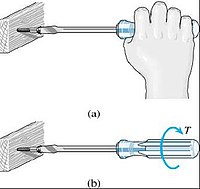
Photo from wikipedia
Using land use types in multiple spatial scales (entire basin, buffer zones, and slopes) as well as statistical and spatial analysis, relationships between land use types and concentrations of dissolved… Click to show full abstract
Using land use types in multiple spatial scales (entire basin, buffer zones, and slopes) as well as statistical and spatial analysis, relationships between land use types and concentrations of dissolved trace metals were determined in the Le’an River Basin, China. The result showed that farmland and urban land were determined as the source of the pollutants, while forestland and grassland were identified as the sink of the pollutants. The temporal differences of relationships between land use types and concentrations of dissolved trace metals mainly due to the discrepancy of rainfall characteristics. Land use type close to river was a better indicator for the effectiveness of concentrations of trace metals, especially at scale of 0–200 m. Forestland and grassland on lower slopes greatly affected the water quality, and the former had no significant or weak influences on higher slopes. Urban land had the greater positive correlations with concentrations of dissolved trace metals on higher slopes, which are mainly due to frequent mining activity. Further analysis suggested that the buffer zones with low slope needed to be seriously taken into consideration for effective land use management in similar basin.
Journal Title: Environmental Monitoring and Assessment
Year Published: 2017
Link to full text (if available)
Share on Social Media: Sign Up to like & get
recommendations!